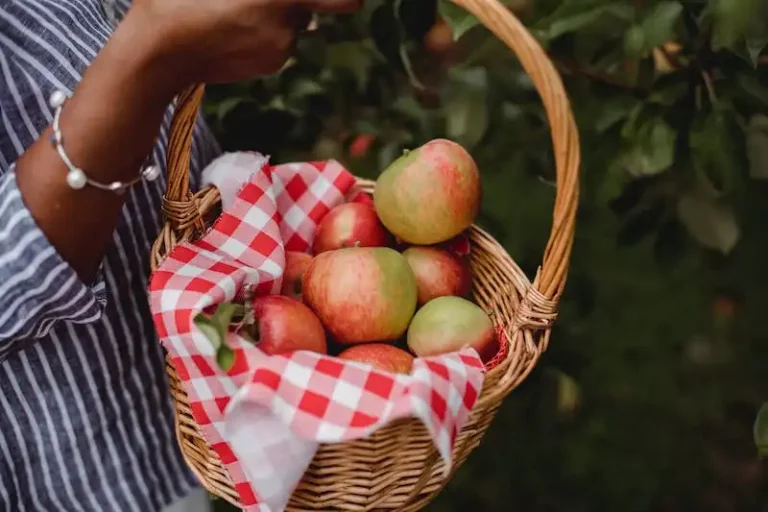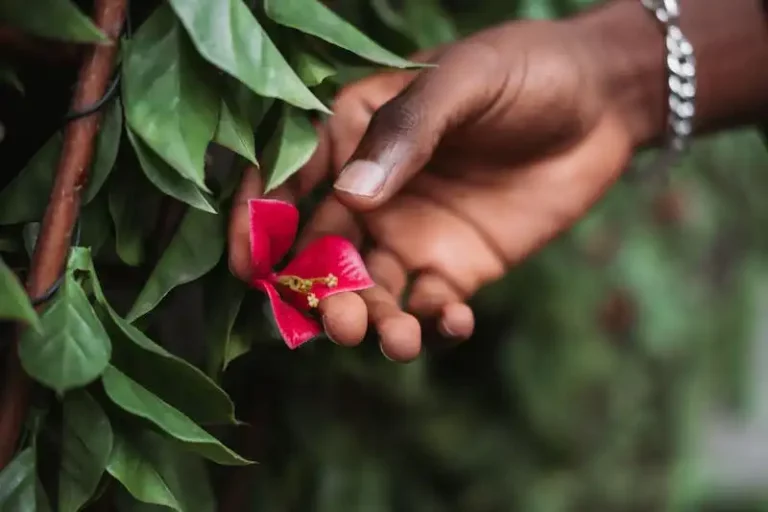Parsley is a versatile herb that can enhance the flavor of many dishes. If you want to get fresh parsley, the only way to ensure its quality is to grow it yourself. Store-bought parsley may not have as much flavor as fresh, home-grown parsley. So, if you’re ready to take the next step and grow your own leafy green, read on for a guide on how to grow parsley.
First, you need to decide whether you want to grow parsley from seeds or from a plant. Both methods have their advantages. Growing parsley from seeds gives you tons of options when it comes to varieties, and it’s an affordable way to get started. On the other hand, planting a parsley plant is quicker and easier, especially if you’re not an experienced gardener.
If you decide to grow parsley from seeds, here’s how to do it. First, soak the seeds in warm water for a few hours to help with germination. Then, sow the seeds about 1/4 inch deep in well-drained soil. It’s a good idea to add some organic matter to the soil to improve its texture and fertility. Water the seeds regularly to keep the soil moist, but be careful not to overwater as it can kill the young plants.
Parsley grows best in cool temperatures, around 60-70°F (15-21°C), and it requires at least 6 hours of sunlight per day. It also likes high humidity, so if you live in a dry area, consider placing a tray of water near the plants to increase humidity. Keep in mind that parsley is a slow-growing plant, and it can take several weeks for the seeds to germinate.
To ensure a constant supply of fresh parsley, consider planting several batches of seeds at different times. This way, you’ll always have mature plants ready to be harvested, even if the first batch takes a while to grow. When harvesting parsley, cut the outer leaves first, leaving the central leaves intact. This will allow the plant to continue growing throughout the season.
Parsley has many uses in the kitchen, from flavoring soups and stews to adding a fresh touch to salads and sandwiches. It’s also a key ingredient in pesto and can be used to make a refreshing parsley tea. Not only is parsley a versatile herb, but it’s also packed with nutrients and has various health benefits. Its high vitamin C and iron content make it great for boosting the immune system and improving digestion.
Although parsley is generally a trouble-free plant, there are a few common pests and diseases to watch out for. One of the most common pests is the swallowtail caterpillar, which feeds on parsley leaves. If you notice these pests, simply remove them by hand and relocate them to another area of your garden. Another common problem is fungal diseases, which can be prevented by watering the plants at the base and avoiding wetting the leaves.
In conclusion, growing parsley is a rewarding experience for any gardener, whether you’re a novice or an experienced green thumb. By following this guide, you’ll be able to enjoy the fresh taste and aroma of home-grown parsley throughout the year. From germination to harvesting and troubleshooting common issues, this article has provided a comprehensive overview of how to grow parsley successfully.
Growing Parsley: How To Get Tons Of Leafy Greenery
If you want to enjoy an abundance of fresh, flavorful parsley in your culinary adventures, there are a few key steps you need to follow. From planting to harvesting, this guide will provide you with all the advice you need to grow tons of leafy greenery in your garden.
Planting Parsley:
- Choose a sunny spot: Parsley loves the sun, so make sure to select a location that gets at least 6 hours of direct sunlight each day.
- Prepare the soil: Parsley prefers well-drained soil with a slightly acidic pH. Amend the soil with organic matter to improve its texture and fertility.
- Sow the seeds: Plant parsley seeds 1/4 inch deep and a couple of inches apart. You can also plant seedlings if you don’t want to wait for seeds to sprout.
- Watering and fertilizing: Keep the soil consistently moist, but avoid overwatering. Fertilize with an organic fertilizer every couple of weeks to promote healthy growth.
- Thinning: Once the seedlings have sprouted, thin them out to give each plant enough space to grow. Leave about 6-8 inches between each plant.
Harvesting Parsley:
- Pick the leaves: Harvest parsley leaves as soon as they reach their desired size. Cut the outer leaves, leaving the inner ones to continue growing.
- Pruning for more growth: Regular pruning encourages parsley to grow bushier and produce more leaves. Trim the stems just above a leaf node to promote new growth.
- Winter harvesting: Parsley is a cold-hardy plant and can be harvested even after the first frost. In fact, cold temperatures can enhance its flavor.
Storing Parsley:
- Freshen up your parsley: If you have harvested more parsley than you can use immediately, you can store it by placing the stems in a glass of water in the refrigerator. This will keep the parsley fresh for several days.
- Drying or freezing: Another option is to dry the parsley by tying the stems together and hanging them upside down in a dry, well-ventilated place. You can also freeze parsley by chopping it up and placing it in an airtight container.
By following these simple steps, you will be able to grow healthy parsley plants that produce tons of leafy greenery. So, get started and enjoy the fresh, flavorful taste of this versatile herb in your culinary creations!
Quick Care Guide
Please refer to the following quick care guide to ensure the successful growth of parsley in your garden.
Germination:
Parsley is a versatile herb that can be easily grown from seeds. It germinates best in well-drained soil and should be started indoors in late winter or early spring. Use a seed-starting mix and keep the soil consistently moist. Germination may take between 3 to 6 weeks.
Care:
Parsley thrives in full sun to partial shade and requires regular watering. The soil should be kept moist, but not overly wet. Regularly check the moisture level and water when the top inch of soil feels dry to the touch. Provide a well-drained soil and ensure good air circulation around the plant.
Harvesting:
Parsley leaves can be harvested once the plant has become established and the leaves are fully formed. You can begin harvesting the outer leaves as needed, taking care not to remove more than one-third of the plant’s foliage at a time. Use sharp scissors or gardening shears to cut the leaves close to the base, leaving the inner growth intact.
Storing:
Parsley can be stored for short periods in the refrigerator. To store for longer durations, it can be frozen or dried. Before storing, wash the leaves and remove any excess moisture. Place in airtight containers or freeze in ice cube trays using water or olive oil. Dried parsley can be crushed into flakes and stored in sealed containers.
Pests and Diseases:
Common pests that can affect parsley include aphids, swallowtail caterpillars, and carrot root fly. Regularly inspect the plants for signs of pest damage and take appropriate action. Diseases such as parsley root rot and parsley leaf spot can also occur. Proper care, including good drainage and avoiding over-watering, can help prevent these issues.
Temperature and Growth:
Parsley grows best in temperatures between 40°F (4°C) and 80°F (27°C). Cooler temperatures can result in slow growth and bitter flavoring. If the temperature drops below freezing, provide protection for the plants with covers or move them indoors. Parsley is a biennial plant, meaning it usually only lasts for two years.
Additional Tips:
– Parsley is a popular herb for both culinary and medicinal uses. Its fresh leaves can add flavor to a variety of dishes.
– Parsley is rich in vitamins A and C and can be consumed as part of a healthy diet.
– If your parsley plants start to develop yellow leaves, it may be a sign of nutrient deficiency or over-watering. Adjust your care routine accordingly.
– If you have any questions or need further advice on caring for your parsley plants, consult gardening publications or contact your local gardening extension office.
All About Parsley
Parsley is a versatile herb that is commonly grown for its leaves, which are widely used in many types of cuisine. Whether you want to add flavor to soups, freshen your breath, or enhance the visual appeal of your dishes, parsley is a great choice.
There are two main types of parsley: flat-leaf parsley and curly parsley. Flat-leaf parsley is preferred by many chefs for its stronger flavor, while curly parsley is commonly used as a garnish. Both types can be easily grown in gardens or containers.
When growing parsley, it is important to choose a well-drained location with at least six hours of daily sunlight. Parsley can be grown from seeds or transplanted as seedlings. It is a relatively low-maintenance plant, but regular watering is necessary to keep the soil moist. Yellow leaves are a sign of over-watering, while dry and brittle leaves indicate under-watering.
Harvesting parsley can be done at any time once the plant has reached at least six inches in height. The leaves can be snipped off individually or the entire plant can be cut back to encourage more growth. Harvested parsley can be used fresh or dried for later use.
While parsley is a hardy plant, it can still be susceptible to diseases and pests. Common diseases include leaf spot and root rot, while aphids and caterpillars are common pests. Regular monitoring and proper care can help prevent and treat these issues.
Parsley can also be propagated through cuttings or division. Both methods require taking a stem or root section from an established plant and replanting it in a new location. This can be a quick and cost-effective way to increase your parsley supply.
In addition to its culinary uses, parsley has various health benefits. It is rich in vitamins A, C, and K, as well as minerals like potassium and iron. It is also believed to have antioxidant and anti-inflammatory properties.
Overall, parsley is a versatile herb that can add both flavor and visual appeal to your dishes. Whether you are a seasoned gardener or a beginner, growing parsley can be a rewarding experience. Just follow this guide to parsley growing and enjoy the benefits it brings to your meals and your health.



